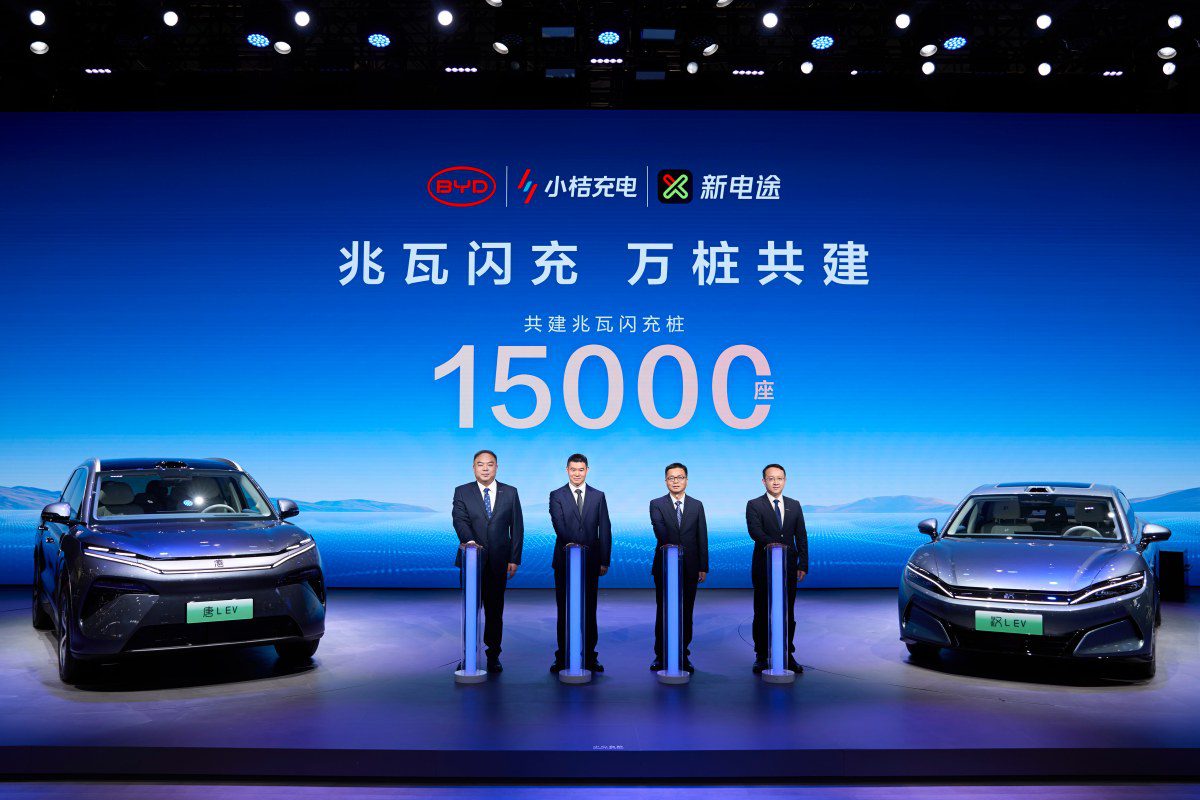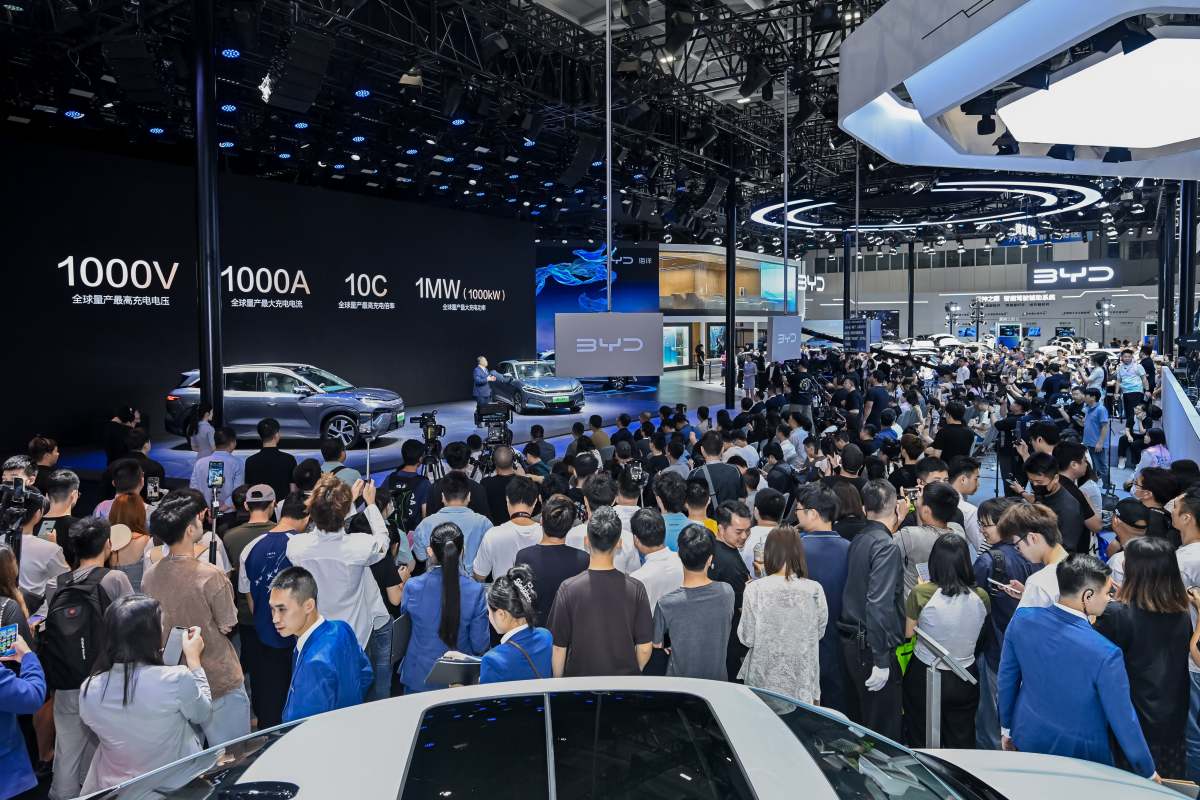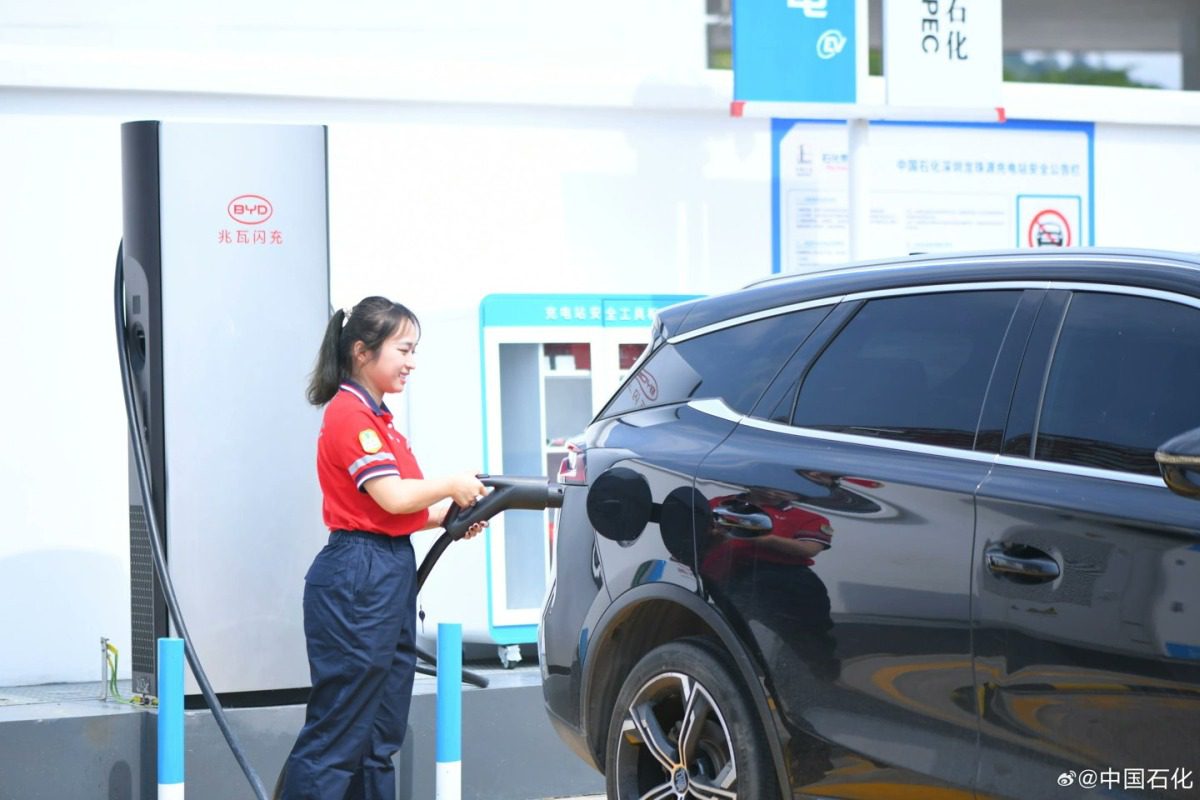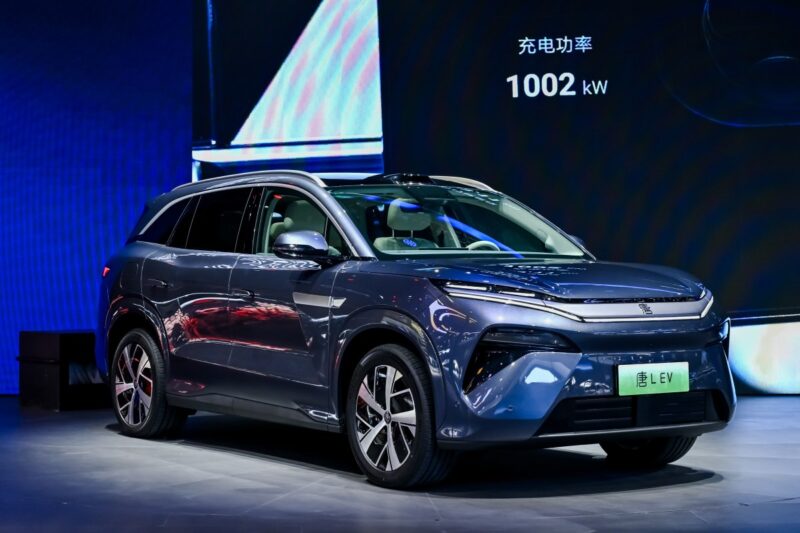In March this year, BYD announced details of its latest EV architecture platform, which would deliver up to 1,000 kW, or 1 MW, of charging power for some of its EV models, helping add 400 km of range in just 5 minutes.
In April, the company quickly rolled out the first few sites with this charging system, showcasing the speed at which BYD aims to roll out this system.
Now, the company has announced a partnership with two charging infrastructure companies in China to roll out 15,000 of its 1 MW charging stations, according to reports from cnevpost.
At the 2025 Shenzhen auto show, the company revealed its collaborations with Longshine and Xiaoju Charging, with both companies having extensive experience with charging infrastructure.

According to BYD, Longshine will build 5,000 charging stations while Xiaoju Charging will build the remaining 10,000 stations.
Longshine currently has access to chargers in 400 cities in China with a coverage of over 90% of the country’s network.
Xiaoju Charging is also heavily involved with rolling out and operating charging infrastructure for Didi, one of China’s top ridesharing platforms.

On the company’s Weibo page, after translation, BYD said: “BYD and Xiaoju Charging New Electric Road cooperate to build a megawatt flash charging ecosystem and start the construction of 15,000 megawatt flash charging piles.
The cross-border cooperation between the technology pioneer and the energy replenishment benchmark allows users to charge with piles, megawatts, and charge quickly”.
The new 1,000 V architecture, capable of delivering 1,000 A of charging current, is designed to add 2 km of range every second, making it one of the fastest charging systems for mass-market EVs.
This new architecture in the “Super e-Platform” is currently available on the latest versions of BYD’s Han L sedan and Tang L SUVs, which began deliveries mid-way through April, prior to the Shanghai Auto Show.
In the month of April, BYD’s sold 10,483 of the Han L sedans alongside 11,406 sales of the Tang L SUV.

These first month sales were quite good for BYD’s flagship vehicles, highlighting the interest in these more premium models from the world’s biggest NEV manufacturer.
BYD’s Han L sedan starts at $A58,500, while the BYD Tang L SUV ispriced from $A60,300.
The company has also previously indicated that the new architecture isn’t limited to these models but will be introduced to other vehicles in the future.
Technically, this 1 MW level of charging delivers 10C charging speeds, meaning that the car’s battery can be charged up to 10 times every hour.

BYD’s new platform is one to watch out for, and with significant investment going into building these 15,000 sites, the company is likely to want more drivers to experience it.
This hints at potentially more affordable models in the future that charge as quickly as the Han L and Tang L do today.

Riz is the founder of carloop based in Melbourne, specialising in Australian EV data, insight reports and trends. He is a mechanical engineer who spent the first 7 years of his career building transport infrastructure before starting carloop. He has a passion for cars, particularly EVs and wants to help reduce transport emissions in Australia. He currently drives a red Tesla Model 3.

